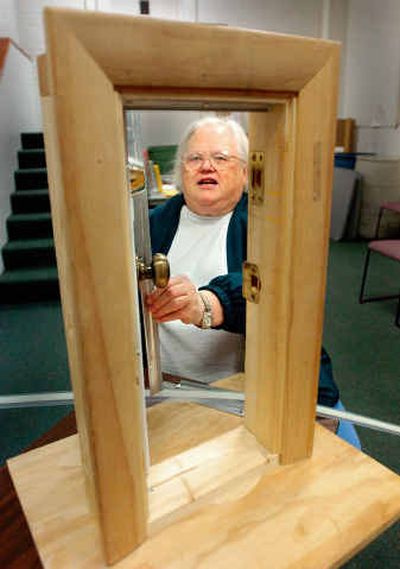Heating bills putting many more in tight spot

Social workers expect more people to seek help paying their heating bills this winter, as rising utility rates cast a bitter frost on household budgets across the region.
Locally, the cost of heating oil has risen 40 cents a gallon since last year. However, the greatest increase in need may come from low-income residents of homes and apartments heated by natural gas. That common heat source will become about 12 percent more expensive starting Monday.
“I’m just seeing it (my bill) going up more every month here lately and you really have to tighten your belt,” said Sarah Defanbaugh, 62, of Spokane.
Two years ago, Defanbaugh, a widow, went to Spokane Neighborhood Action Programs because she was unable to stretch her $600 monthly income to cover rising heating bills.
SNAP distributes money from government agencies, utility companies and ratepayer donations to people who meet certain income guidelines.
People who aren’t eligible for federal funds may qualify for one-time emergency assistance through Avista Utilities’ Project Share, which is funded by ratepayer, employee and shareholder donations.
Margaret Belote, coordinator of SNAP’s energy program, said staffers are seeing a growing number of people who are unemployed, or working and uninsured, and seniors, who juggle costly prescriptions and co-pays for doctor visits.
“It isn’t like we see the same people every year. That’s not the case,” Belote said. “All of us are one paycheck away from it unless we are really in a wealthy class.”
Last year, SNAP helped 8,787 households and provided $5.1 million in assistance. On Tuesday, when SNAP’s energy assistance line opens, Belote expects that staff will make appointments to see 500 to 600 people.
The same scene will play out nationwide. The National Energy Assistance Directors’ Association in Washington, D.C., estimates that states will have 20 percent more poor families seeking assistance with energy bills this winter, according to the Knight Ridder news service. Congress hasn’t appropriated enough additional money for the Low Income Home Energy Assistance Program to cover those projected increases, the association says.
The energy association gives money to states, which make decisions on how it’s distributed.
Pamela Haslett, a Spokane mother of two who gets state disability, starts praying when she hears rumors about budget shortfalls for energy assistance.
Like other low-income families, when heating bills climb, hers is forced to make tough choices.
“For me, especially with the kids, if I didn’t have the energy assistance program we wouldn’t have Christmas,” Haslett said. “It’s not just me. There are a whole lot of people it benefits.”
Washington helps families of four that make up to $1,964 a month, and individuals with incomes up to $970 a month. That’s 125 percent of the poverty rate.
Those low-income residents receive from $25 to $750 for the winter. In most cases, the money is paid directly to the utility company.
Last year, 5,261 families in five North Idaho counties received a total of $1.4 million in assistance distributed through Community Action Partnership.
Idaho provides less money per household than Washington, but includes people making up to 133 percent of the poverty level – $2,089 for a family of four or $1,032 for an individual (Idaho’s energy assistance program begins on Dec. 1).
“What we are seeing is the average benefit in the state of Idaho is $260, and that doesn’t go very far,” said Lisa Stoddard, executive director of Community Action Partnership. “People are just having a hard time making ends meet.”
The Spokane Valley Community Center helped 2,500 people avoid utility shut-offs last year – one-third more than the previous year.
The program is funded by individual donations and grants from utility companies, and operates year-round. Usually, demand drops substantially during the spring; however, this year need persisted.
“Again, these are working people, and 95 percent of them live in the city of Spokane Valley,” said Executive Director Mollie Dalpae.
The center’s goal is to provide one-time annual assistance that thwarts utility shut-offs.
“Once the utilities are cut off, people don’t make it to work and kids start missing school, so it’s crucial to keep utilities on while we’re dealing with other issues,” Dalpae said.
Area agencies offer classes in energy conservation. Belote suggests that people switch to comfort-level billing, which bills customers an average amount year-round as opposed to low bills in summer and high bills in winter. She also suggests contacting the utility immediately if there’s a financial problem.
Haslett has taken SNAP’s energy conservation classes and watches her pennies. Still, she doesn’t know how she’d get by without assistance.
“It’s hard choosing which bills to pay,” Haslett said. “I’m very thankful we have the energy assistance program.”